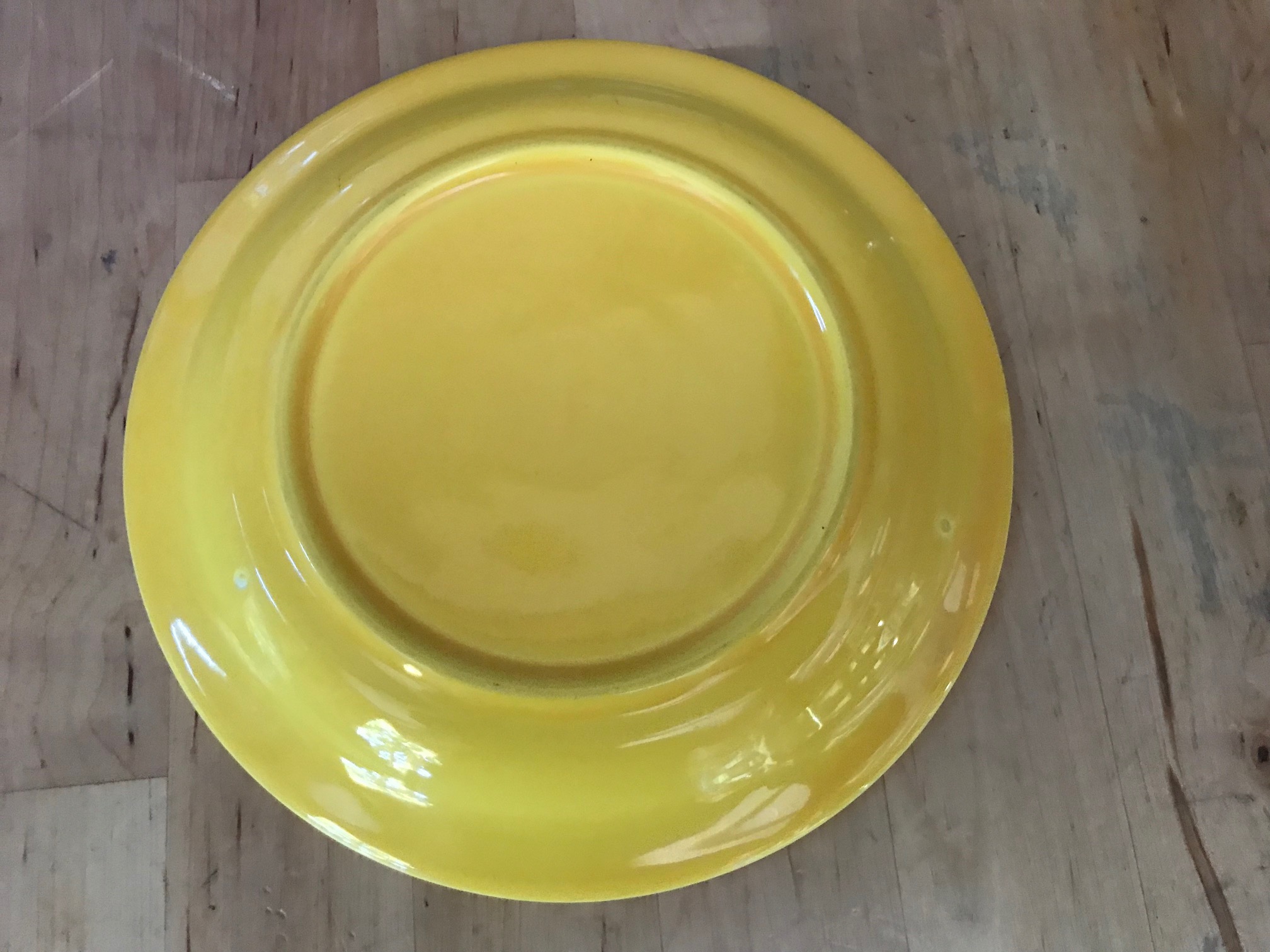Vintage (c. 1938-1960) Ceramic Harlequin by Homer Laughlin Co. Fiesta Plate: 287,600 ppm Lead [90 ppm is unsafe].
This little yellow plate was purchased at an antique store in Oregon in 2018. While there is not a maker’s mark on the back of the dish, the store owner had researched the plate and came up with this description: Vintage Yellow Ceramic Harlequin by Homer Laughlin Co. Fiesta Plate, c. 1938-1960
When tested with an XRF instrument this dish was positive for the following elements at the noted levels (in parts per million):
- Lead (Pb): 287,600 +/ 21,000 ppm
- Barium (Ba): 2,311 +/- 723 ppm
- Antimony (Sb): 11,500 +/- 900 ppm
- Tin (Sn): 1,239 +/- 200 ppm
- Zinc (Zn): 111 +/- 74 ppm
- Iron (Fe): 464 +/- 242 ppm
The amount of lead that is considered toxic in a newly manufactured item intended for use by children is anything 90 ppm lead or higher in the coating or 100 ppm lead or higher in the substrate (per the Consumer Product Safety Improvement Act).
A lead level of 287,600 parts per million in a plate that is intended to be used as every day dishware is VERY concerning! I would not use these plates for food-use purposes under any circumstances (even, for example, limited holiday use.)
Vintage Homer Laughlin/ Fiestaware pieces tend to all be VERY high lead. New pieces from this company that are marked “lead-free” on the bottom are either negative for lead (ND/ non-detect) or very low lead (generally under 100 ppm) when tested with an XRF instrument.
Click here to see some examples of lead-safe/ lead-free Fiesta pieces:*
Turquoise Blue
Poppy (Red)
Tangerine Orange
Lapis Blue
Here are other Fiesta pieces I have tested (modern and vintage).
There is no regulatory standard for lead for dishes when tested with an XRF instrument. Standards like “Prop 65” compliance or “leach testing” do not have minimum or maximum safety limits for how much lead can legally be in a modern dish (or vintage dish for that matter) when tested with an XRF instrument. The XRF generally tests the amount of lead (total lead content) in the top layers of the item it tests, so in the case of dishware XRF readings are generally reflective of how much lead is likely in the glaze.
Thank you for reading!
As always, let me know if you have any questions. If you would like to help support my independent consumer goods testing and lead poisoning prevention advocacy work – please click here for all the ways you can help!
Tamara Rubin
#LeadSafeMama
*Links may be Amazon affiliate links. If you purchase something after clicking on one of my links I may receive a small percentage of what you spend at no extra cost to you.
Never Miss an Important Article Again!
Join our Email List






Hi Tamara,
Thank you for your amazing site!! I have found it so useful as a resource and stocked my kitchen based on your suggestions. I have a question about the Corningware brand of ceramic baking dishes. My doctor said it used to be clean years ago but that she thinks now sometimes there are other metals in it. Have you tested it?Thanks!!
Can you email me a picture? or post a link? TamaraRubin@mac.com